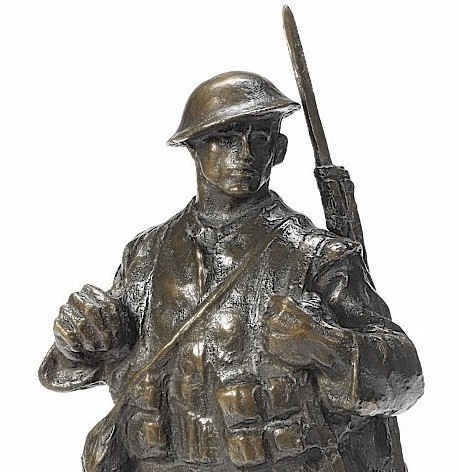A bronze figure depicting a soldier from the Great War sold for nearly £30,000 yesterday at a London auction house.
The bronze infantryman is the work of Aberdeen-born monumental sculptor William McMillan.
This figure depicts a heavily equipped soldier fitted for winter trench duty, wearing a 1915 Brodie helmet and standard issue leather jerkin with trench waders and Short magazine Lee Enfield rifle. Posed with his thumbs through his webbing straps, he exudes an air of calm authority.
The 14in figure – signed by the artist in the bronze, c.1925 – sold for £28,750 at Bonhams’ First World War Centenary Sale in London.
McMillan studied at Gray’s School of Art in Aberdeen and the Royal College of Art between 1908 and 1912.
He joined the Territorial Artists Rifles at the start of World War I and was commissioned into the 5th Oxford and Buckinghamshire Light Infantry, arriving in France in August 1915.
According to London Remembers, a website which aims to pinpoint all memorials in London, McMillan was awarded the British and Victory medals during the World War I which he had designed.
As a sculptor, McMillan was distinguished by his wide range of subjects, from war memorials – one in Aberdeen and one in Manchester, dated 1919 – to medals and figurines.
He sculpted many prominent famous figures over his lengthy career. His Earl Haig (1932) can be seen at Clifton College, Bristol and a statue of King George VI (1954) in his garter robes stands in Carlton Gardens, London.
Aberdeen, the city of his birth in 1887, elected McMillan as one of its Freemen and its University conferred upon him the honorary degree of Doctor of Law.
In retirement McMillan was elected an Honourary Life Member of the Chelsea Arts Club, where he lunched almost daily until his death.
A few days before his 90th birthday in 1977, McMillan travelled to his Chelsea bank from his home in Richmond in Surrey, was mugged and found in the street badly injured minus his wallet. He died shortly afterwards in hospital.
